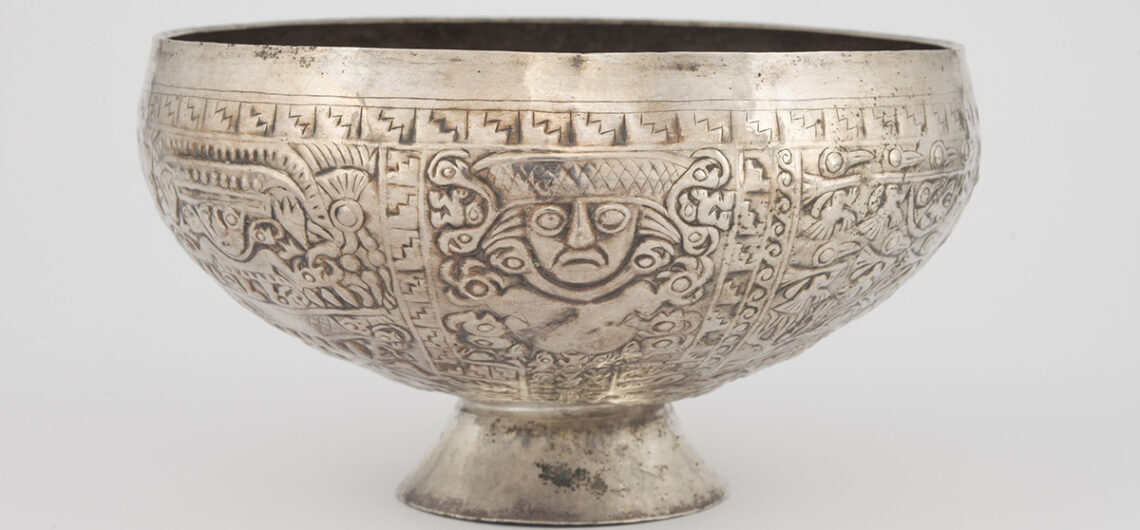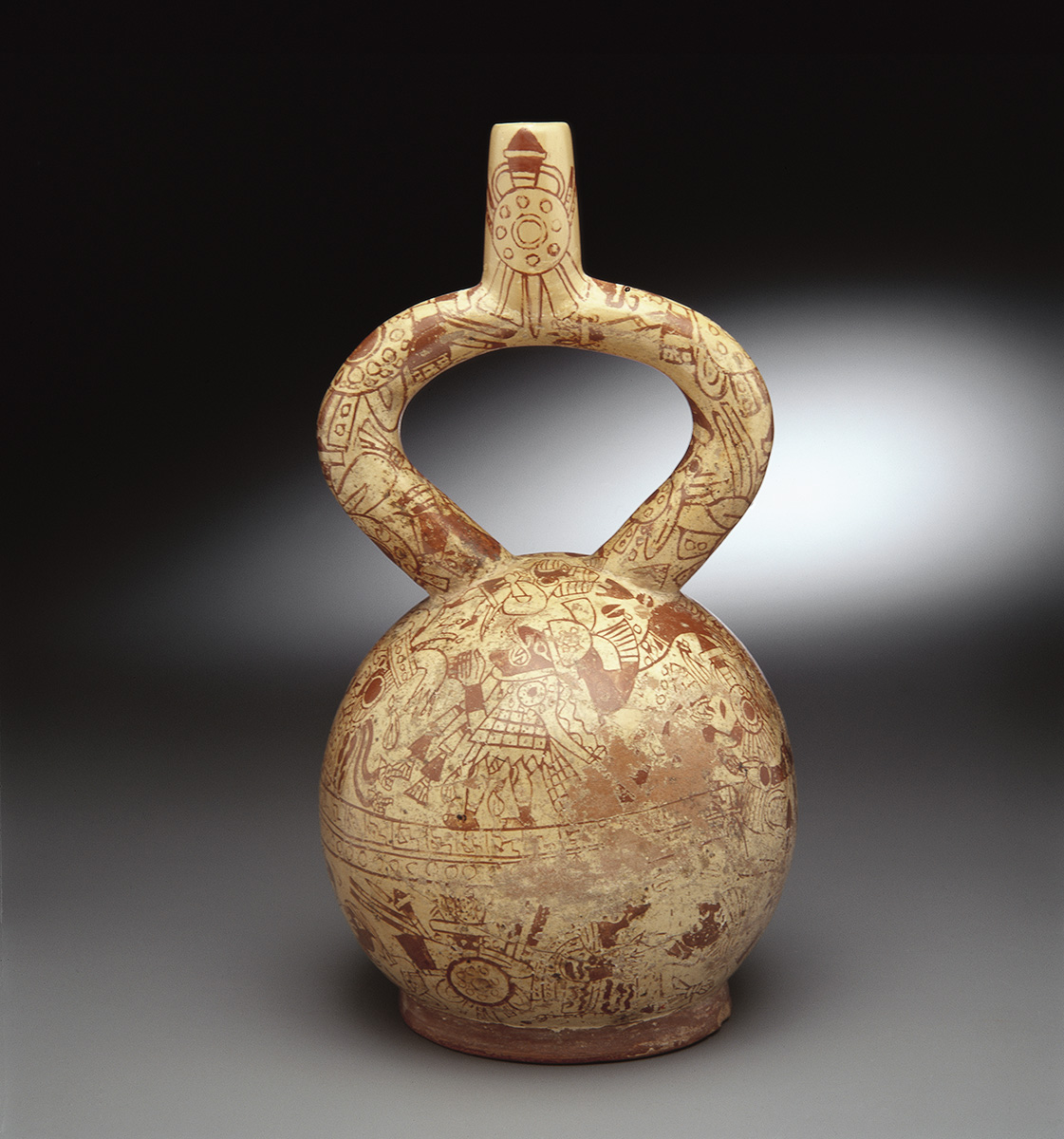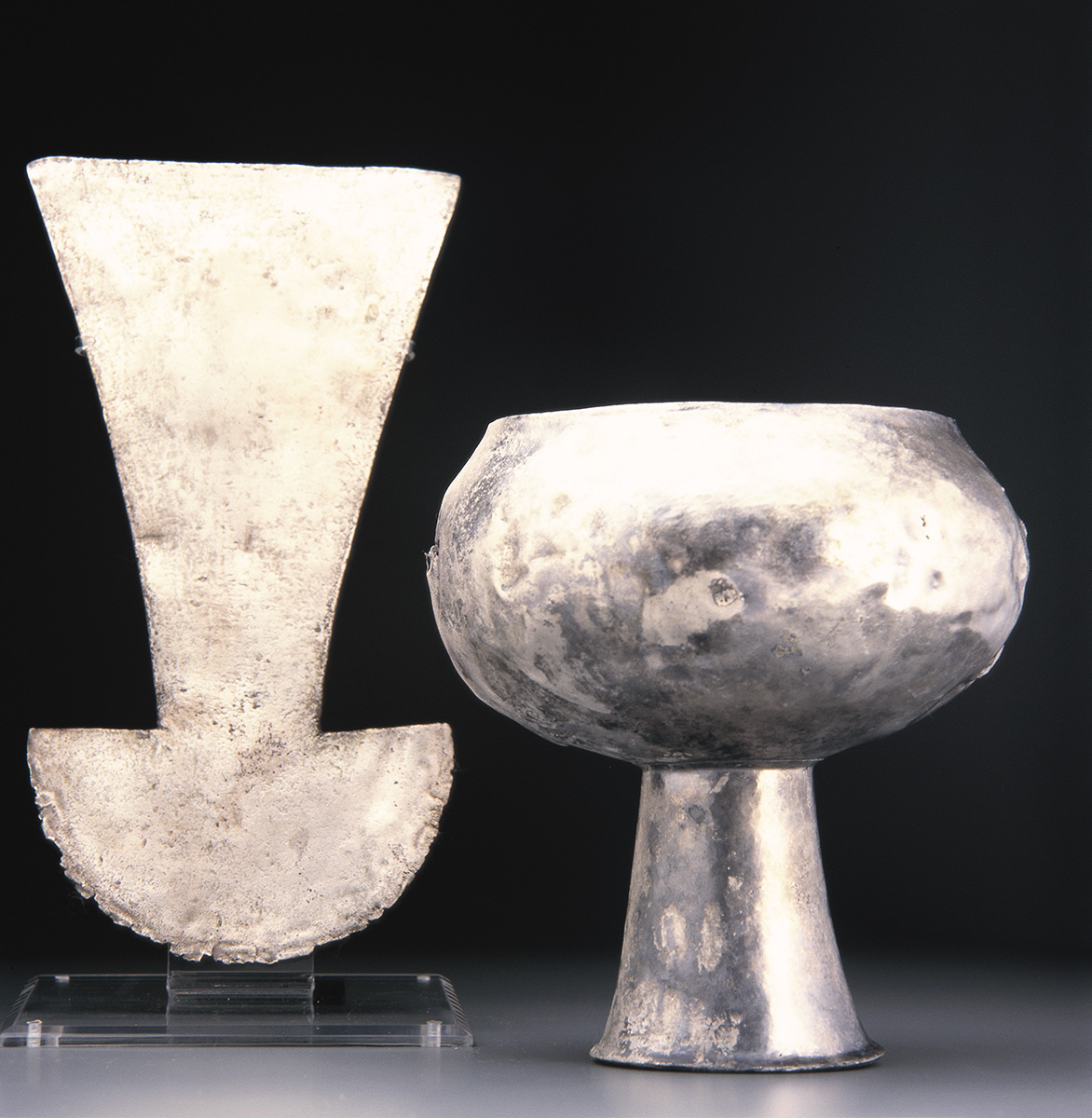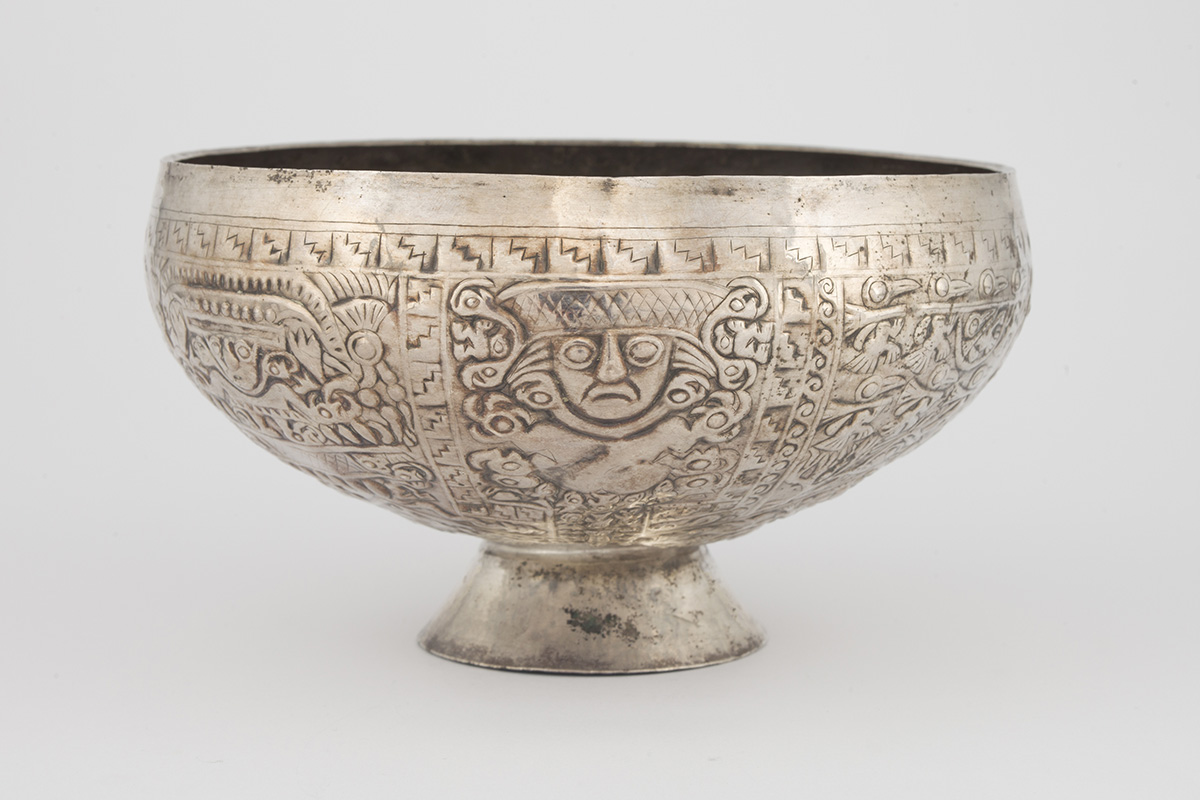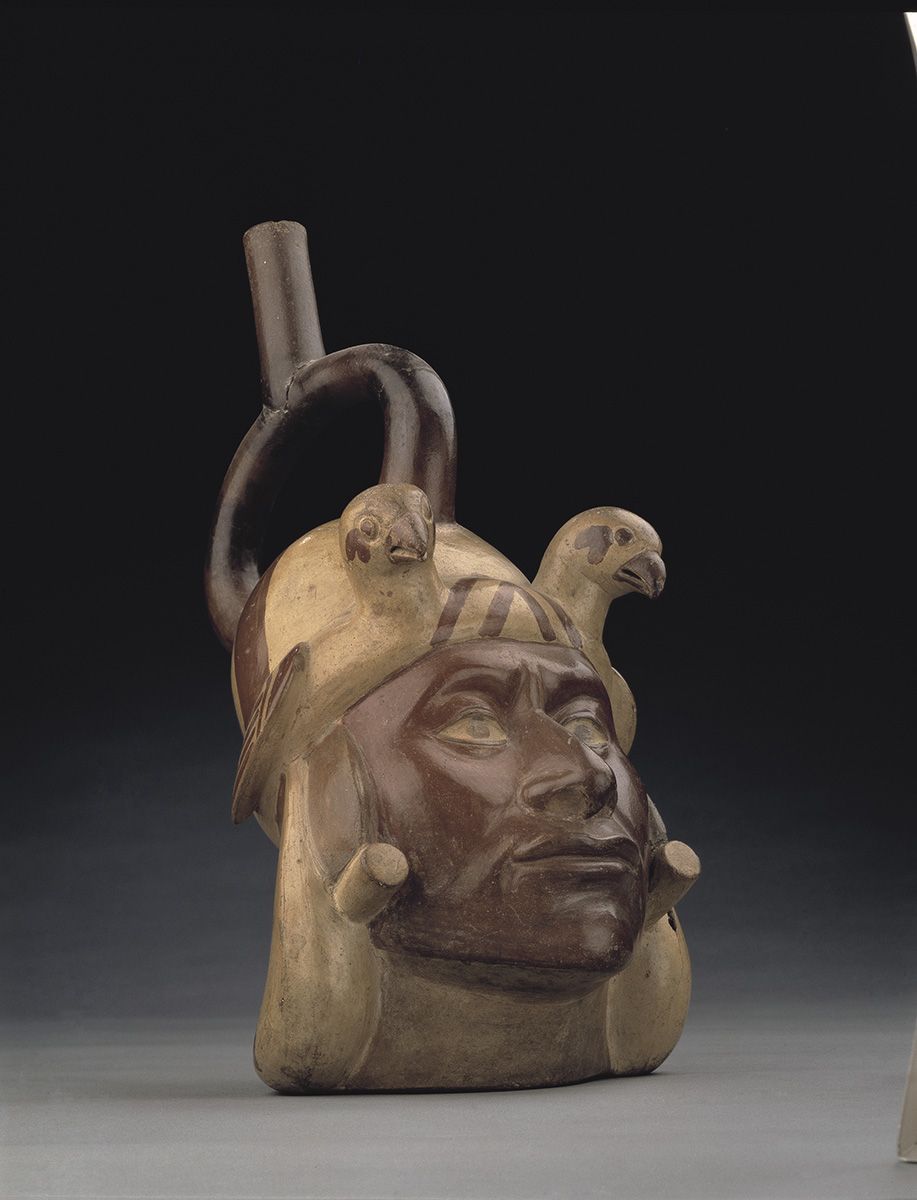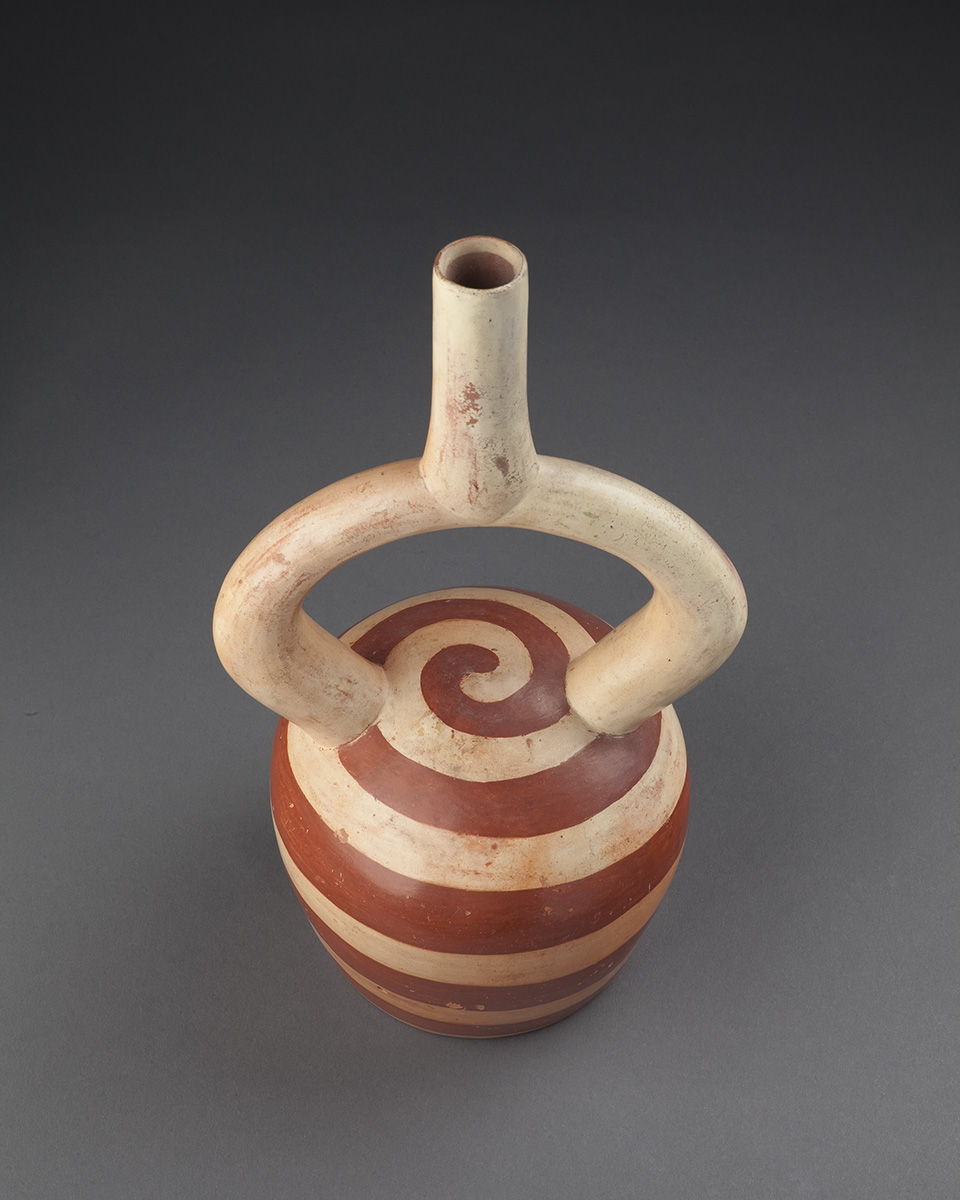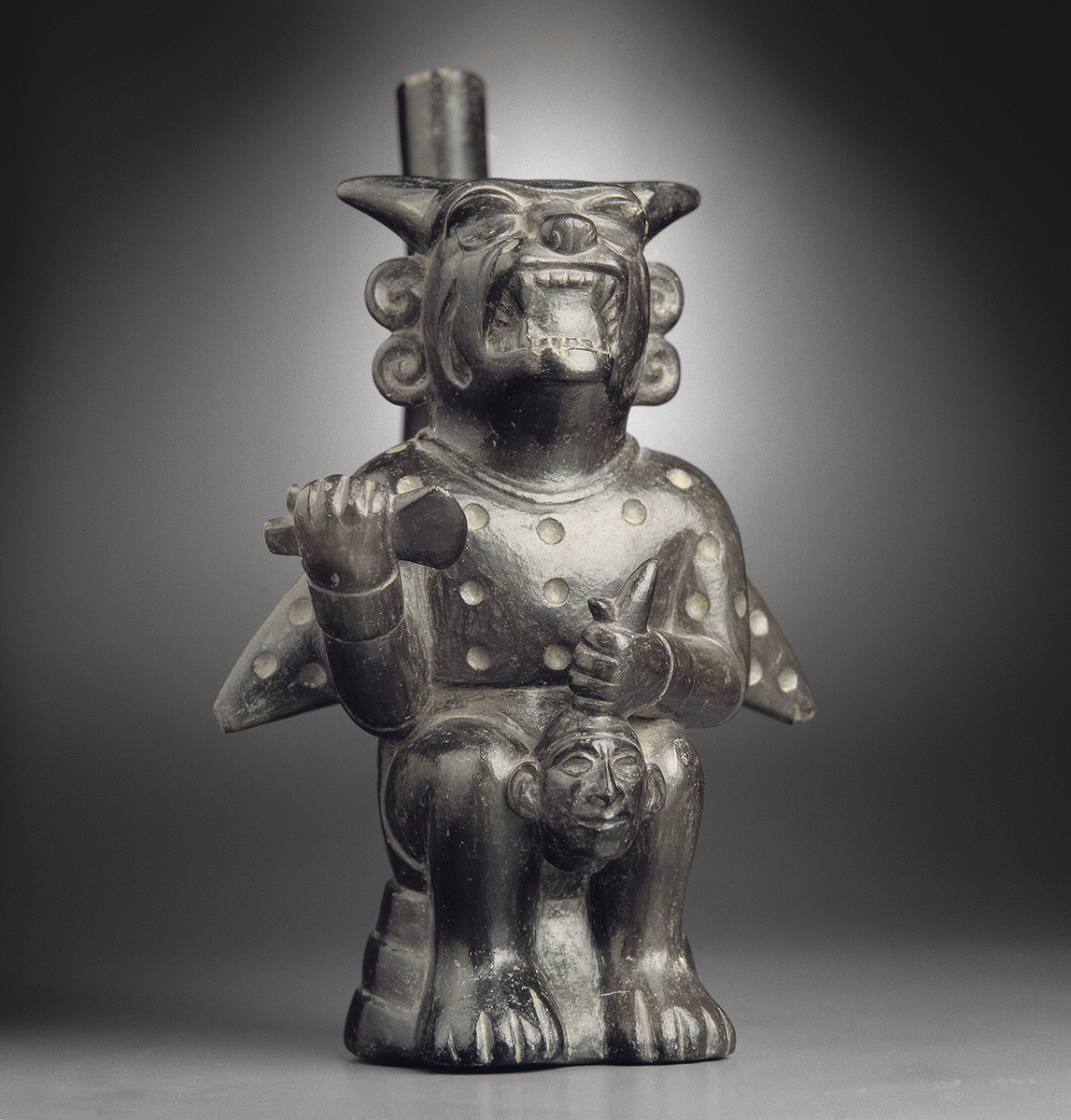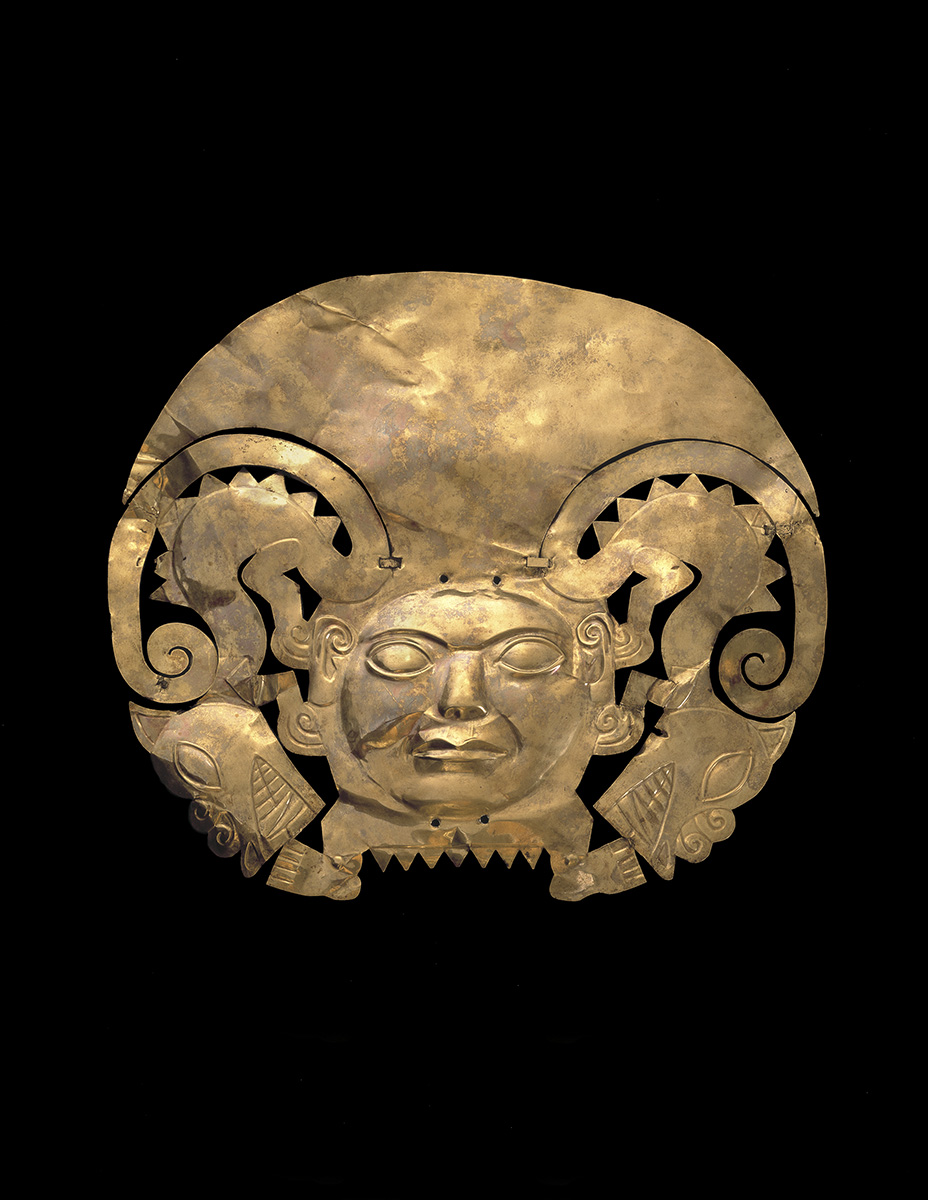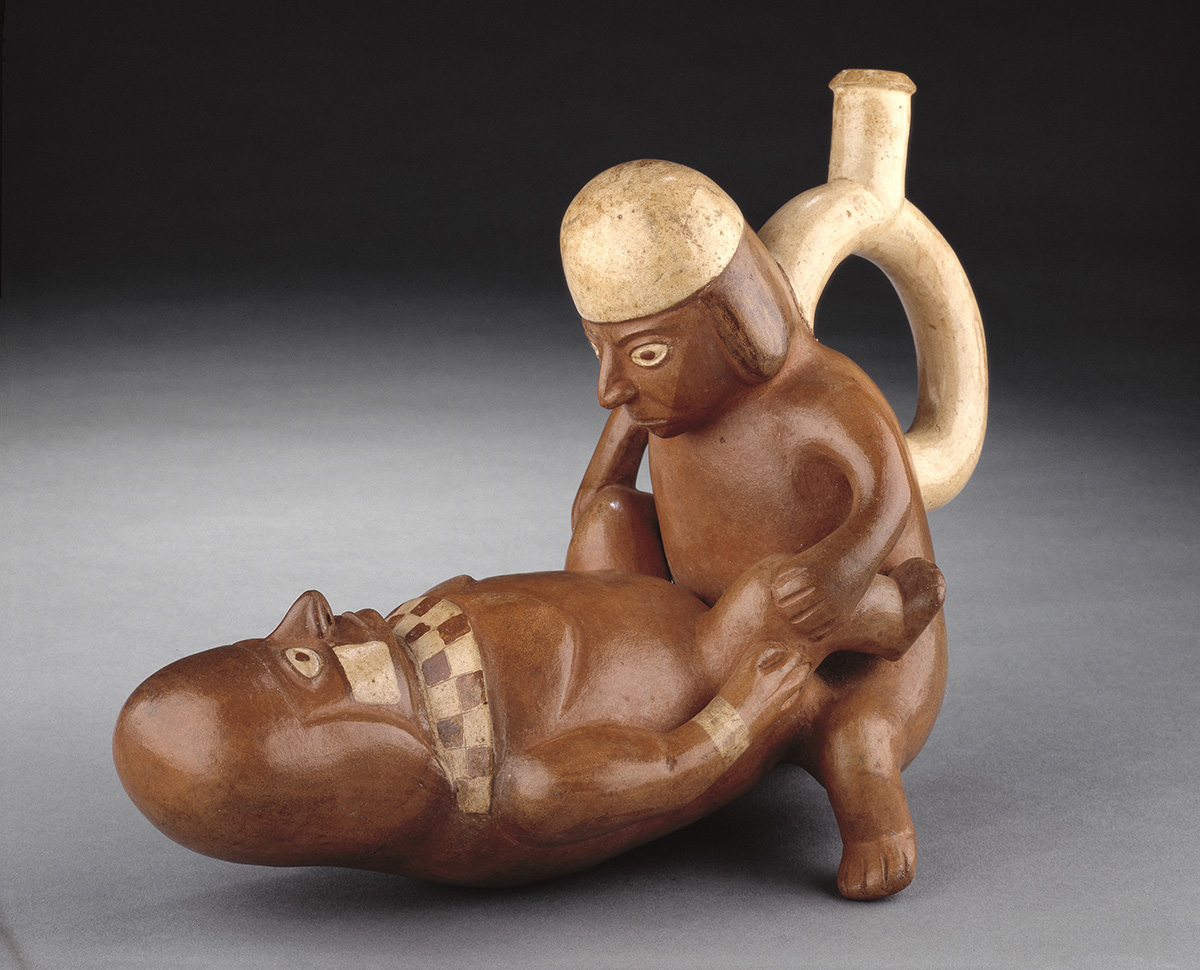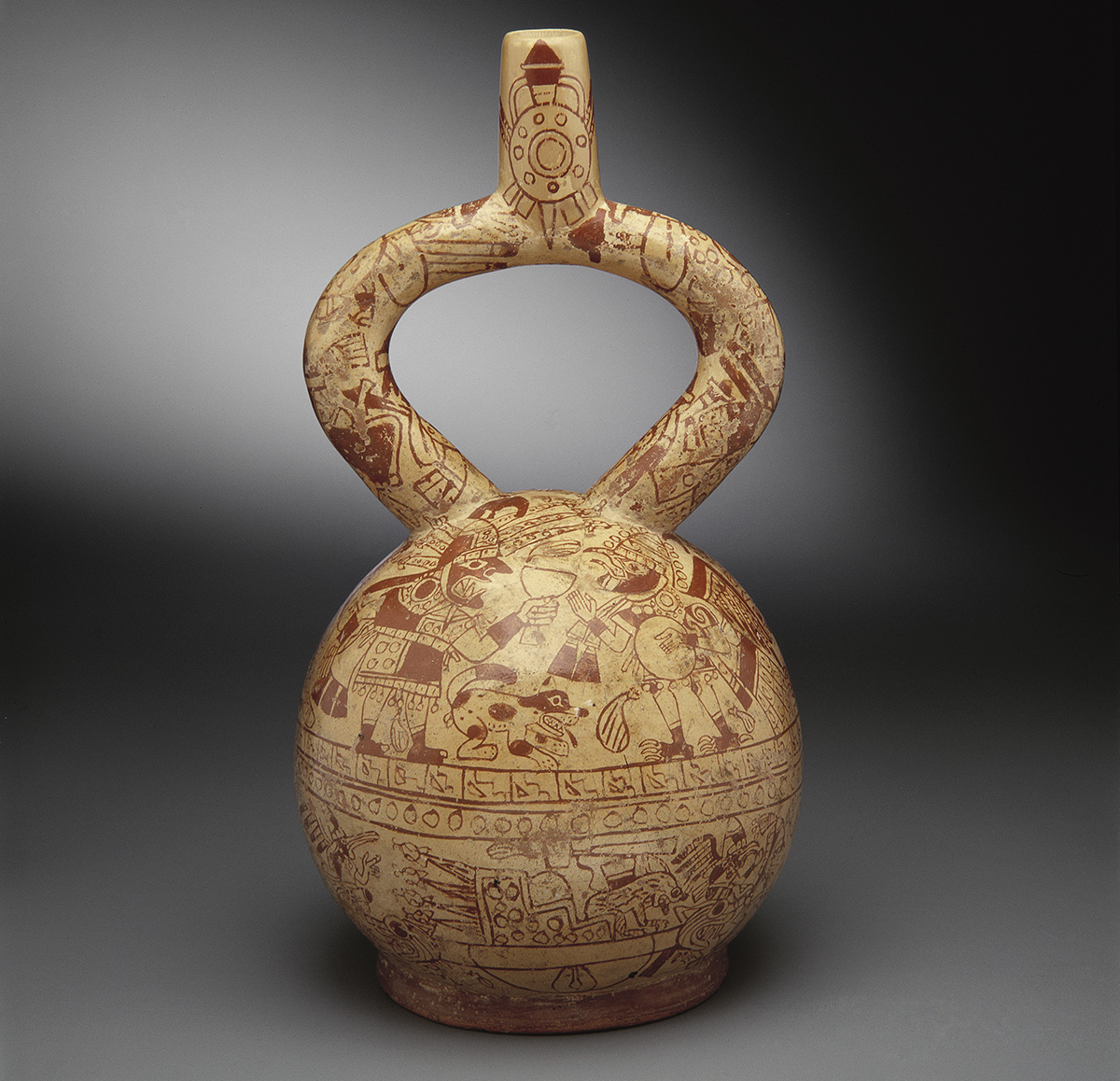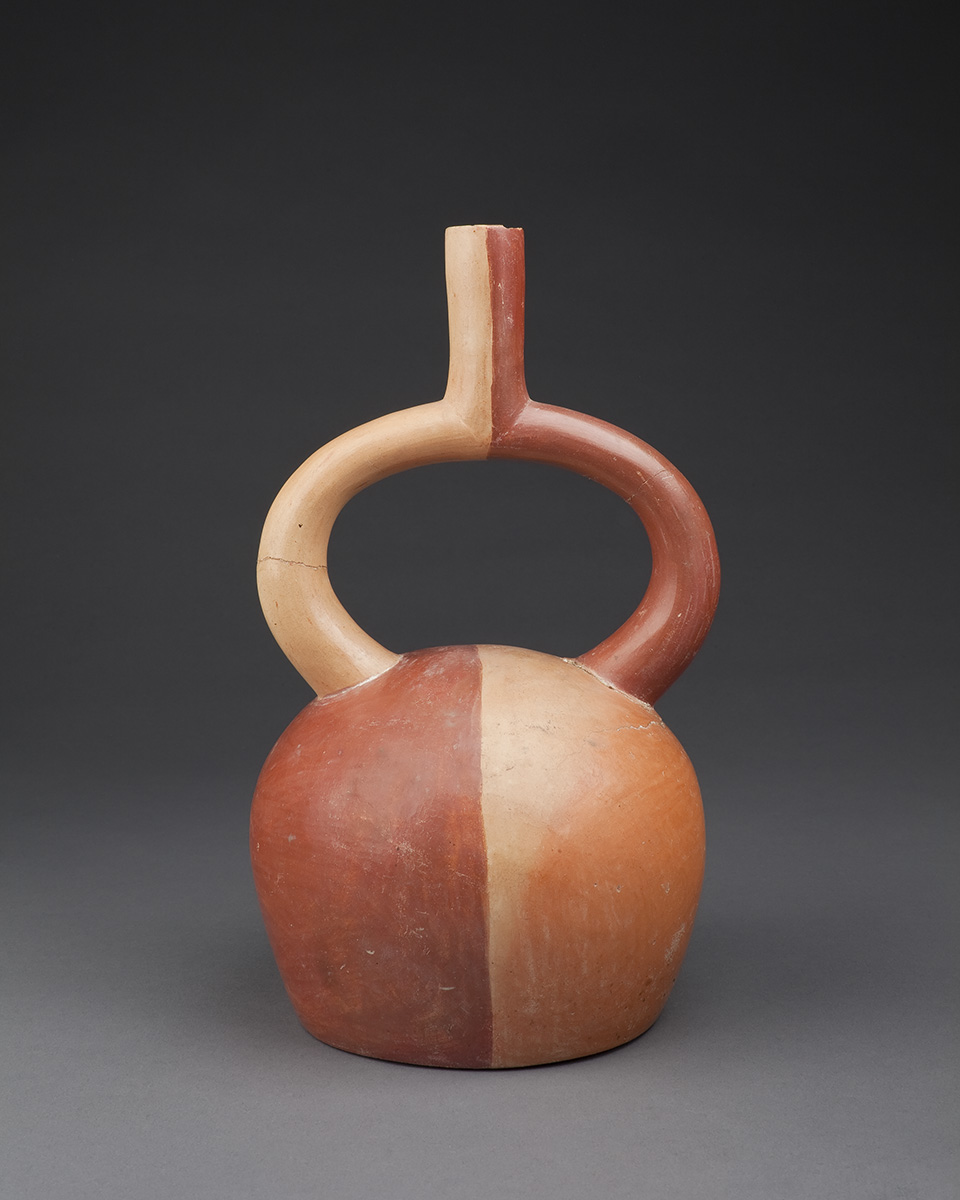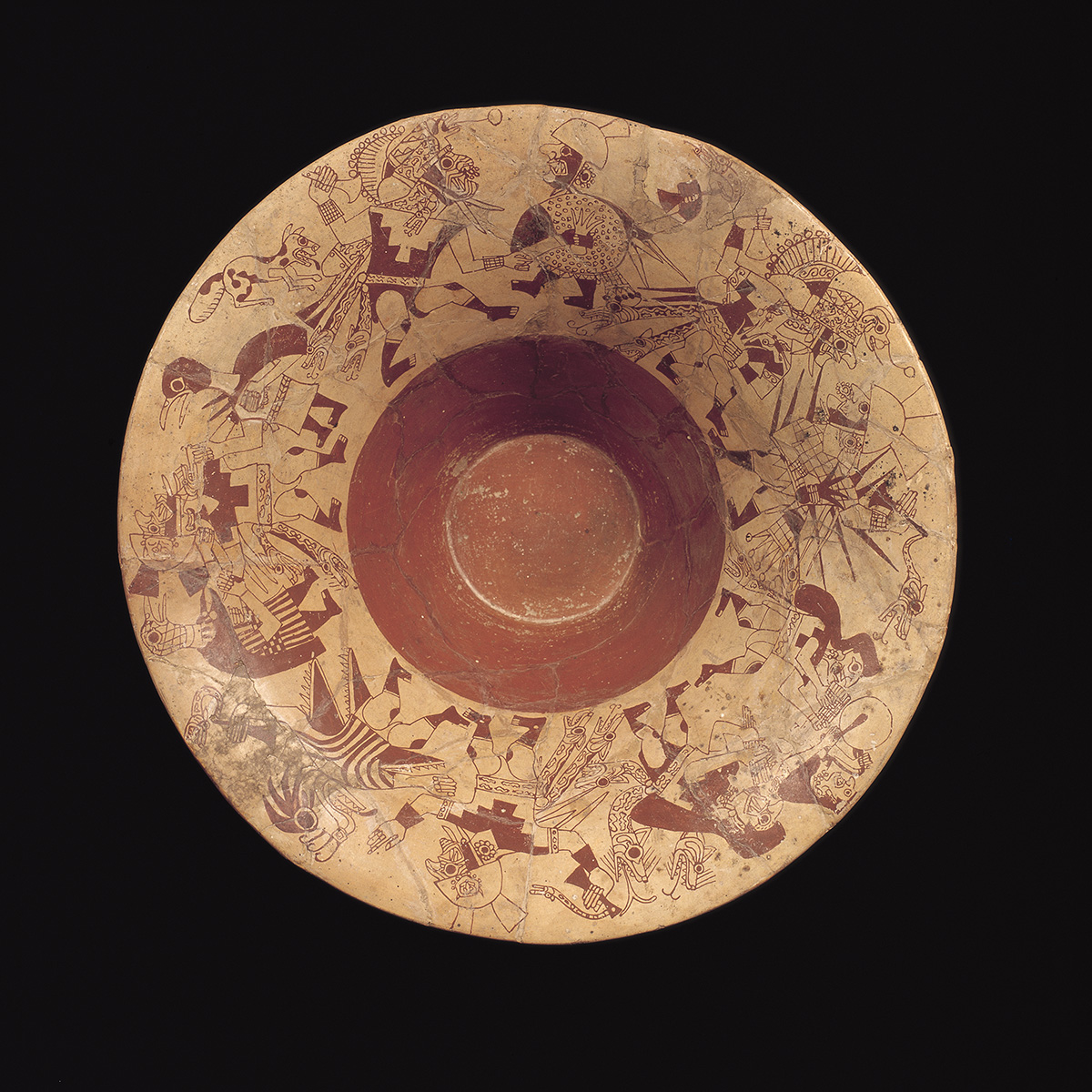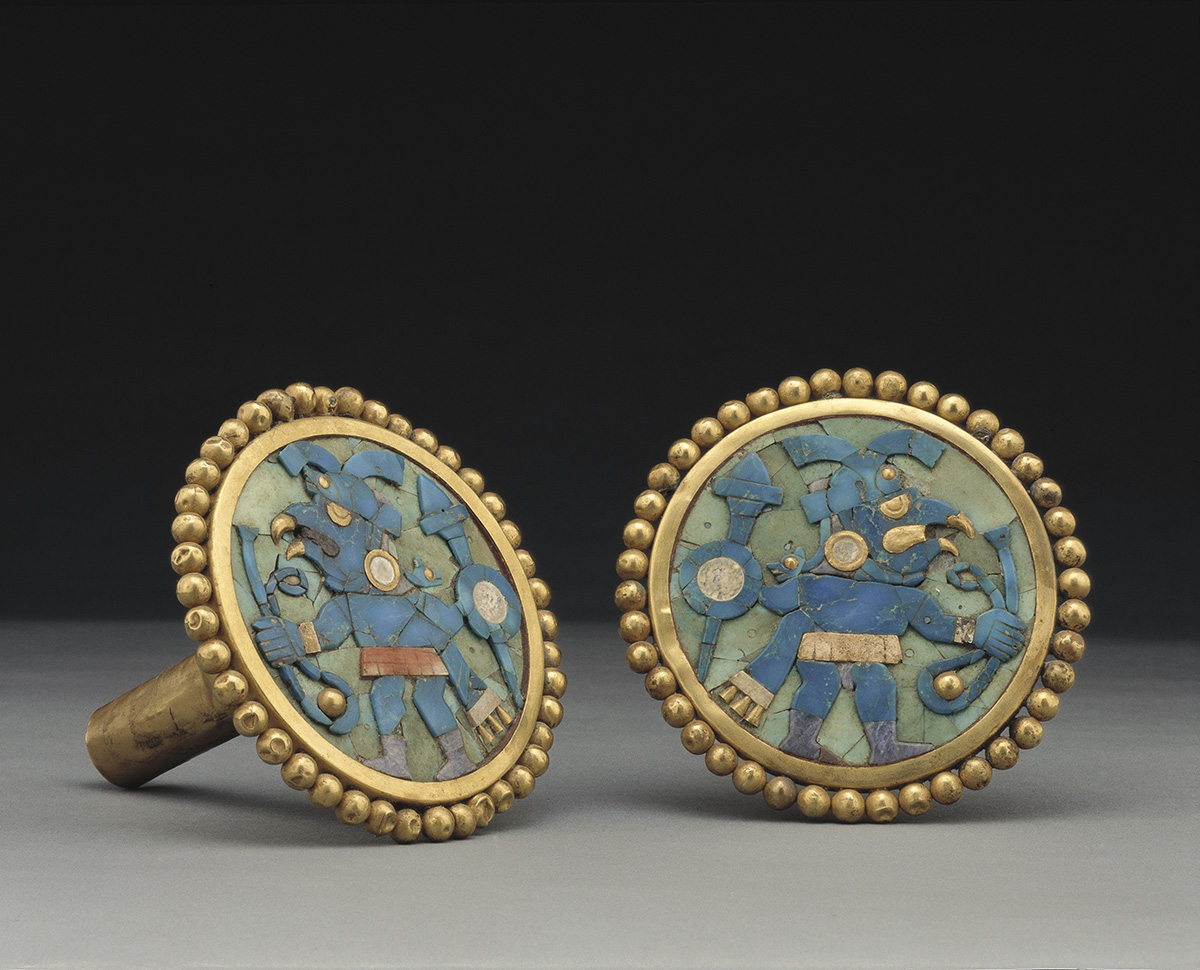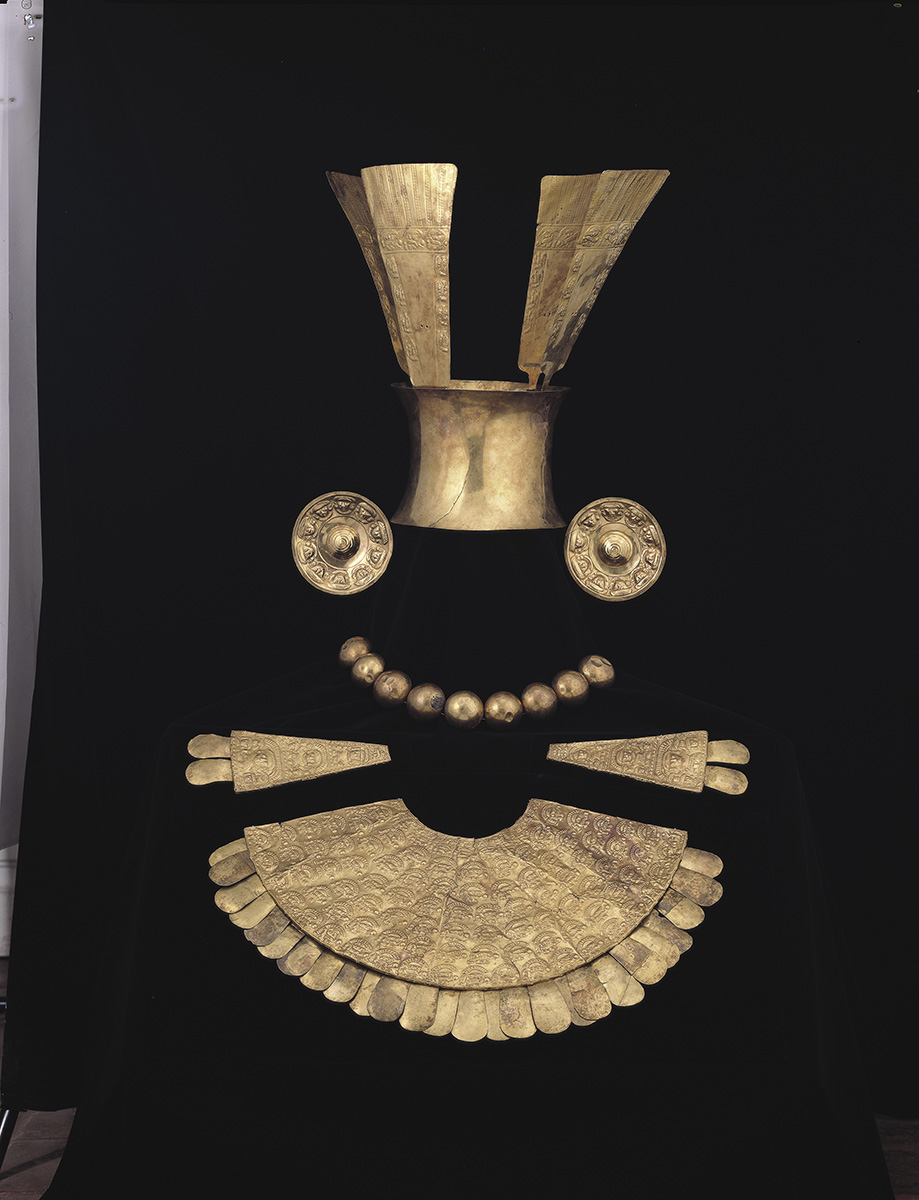A new exhibition in Barcelona, inaugurated on March 4th, “Oro, mitos y ritos. Arte mochica del antiguo Perú” (Gold, myths and Rituals. Moche Art of Ancient Peru) will focus on the art of the Moche civilisation which prevailed over the northern coast of Peru between 100 and 800 AD. Moche artists developed sophisticated works and are renowned not only for their mastery, but the tremendous skill and creativity that they applied in documenting their mythology and rituals through Moche art.
Moche Art
The exhibition will feature 200 pieces exclusively chosen from the Larco Museum in Lima to constitute a “little Museo Larco”, as curator Ulla Holmquist put it when we caught up with her in the midst of busy preparations for the exhibition.
See Moche art first hand with a tour of the Highlights of Northern Peru. Read more.
“A number of ceramic pieces on display depict the ceremony of sacrifice,” Holmquist told us, while there is all the exquisite pomp of gold headdresses and jewellery worn by lords and kings of Peru’s ancient northern kingdoms to demonstrate their power. There are fine cups and goblets that were used for rituals, textiles and pieces incorporating feathers, shell and bone amongst other works.
Art as a symbolic language for Andean Cosmovision
“Ceramics amounted to the words of a language. Art was a symbolic language through which the Andean cosmovision could be interpreted,” explained Holmquist. “This art was close to nature, and showed the power that people felt that they had to connect to the upper world through the natural world.”
Strong depictions of animals, a hallmark of Moche ceramics, can be found throughout the pieces on display. Animals – and human relation to them – formed the basis of an ancient Peruvian view of the world and symbolised the divisions between the three different realms. The condor represented the upper world, the serpent and the spider were commonly used to depict the underworld, while the middle ground, which humans inhabited, was dominated by big cats like the jaguar and the puma. Duality, central to pre-Columbian cosmovision (the distinction between sun and moon, male and female etc.), is depicted while fertility and reproduction are also prevalent themes.
Moche Art at Lima’s Larco Museum
Although the extensive Larco Museum catalogue spans thousands of years of civilisation across Peru, Moche art dominates in the capital’s museum – ceramics in particular – and so this is the key focal point of the exhibition. The ample, well-preserved Moche ceramics available to archaeologists and art historians gives the opportunity to contrast and compare different styles, assess how designs have developed over time and how they have been transmitted between different regions. Through detailed investigation, it is possible to observe how Moche society formed its beliefs and assimilated aspects of cultures from other parts of Peru.
Such artwork provides an unprecedented chance to interpret the worldview of ancient people and their relationship to the natural world. This, Holmquist suggests, is the reason for the current interest in ancient Moche art in Europe. “Interpreting the art of these cultures provides new ways of understanding the world and the relationship between the ancient and the modern. There is a trend in which ancient people are getting closer. Ancient Moche people symbolised the human experience through the arts and people today can relate to that idea.”
The Caixa Forum is simultaneously showing an exhibition on ancient Egyptian Art, not only reflecting the current clamour for ancient culture but allowing people to compare and contrast different ancient artistic styles. Several interesting comparisons can be made between ancient Peru and Egypt. Both were centres of the development of civilization independent of outside influence in dry, desert areas with limited water resources. Both buried their royalty together with vast treasures, which in modern times have borne the two biggest discoveries of gold in a tomb: Tutankhamun and the Lord of Sipan. Both cultures also revered animals as deities and depicted animals as a central part of their art, symbolism and language.
Notwithstanding, it is not only interest in all-things-ancient and the mastery of Moche artists that has stoked interest in ancient Peruvian art. Caixa Forum also identified the innovation of the Larco Museum, inviting them to present this solo exhibition. “They were interested the story of the Larco Museum,” explained Holmquist. “They were impressed by the look of our collection, how it is presented and our approach to storytelling.”
Those who have visited will know that the Museo Larco’s catalogue is meticulously well presented, not only to demonstrate how the cosmovision and myths of ancient Peru are depicted in pre-Columbian art, but to make this interpretation accessible to people who aren’t necessarily specialists in archaeology. Pieces are logically grouped together from different regions, arranged clearly to depict the synthesis of the myriad of different cultures that presided long before the ascent of the Inca Empire. Together with excellent diagrams and interpretations, translated into several languages, visitors to the museum can begin to appreciate the complexity of civilisation’s development in ancient Peru.
These themes will all be central to the exhibition in Barcelona. As curator of the exhibition Holmquist has been actively involved with selecting pieces, working with organisers at the Caixa Forum to hone down a selection that is representative of the Larco collection.
“It will be a well-narrated and well-explained exhibition, a chance for us to present and interpret the Larco collection overseas. I want Larco to tell the story of Moche art, and we want to touch on lives by showing people the aesthetic brilliance of this art and the mastery of Moche potters.”
The exhibition is open to the public from March 5th to June 7th at the Caixa Forum in Barcelona.
Visit the Moche Route with Aracari
Read more information on Peru’s Moche Route and check out our itinerary Highlights of Northern Peru. Contact us for more information on arranging a private, tailormade trip to Peru’s Moche Route.

